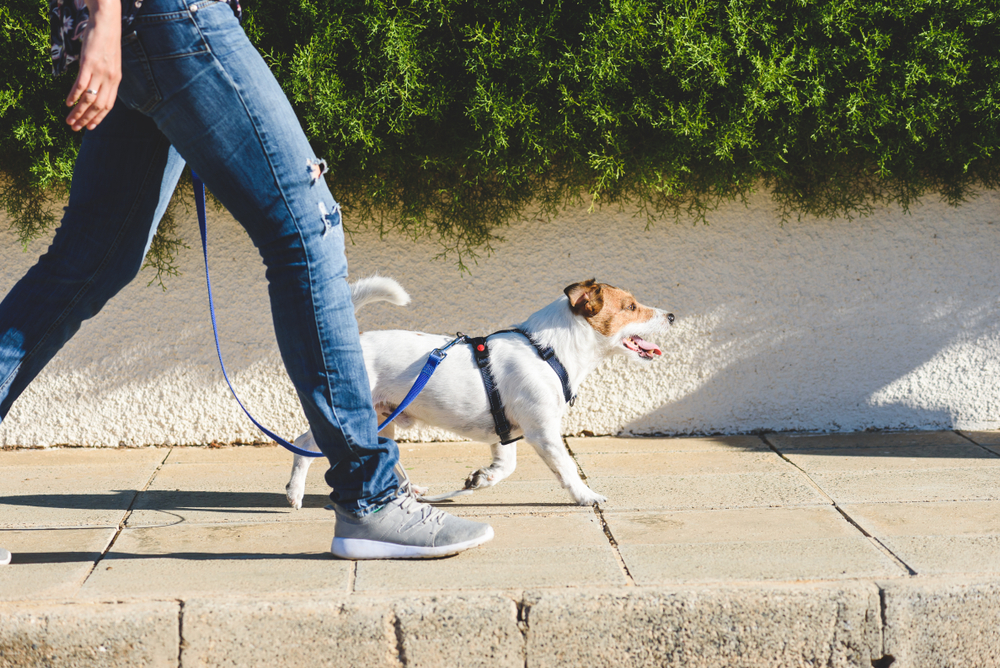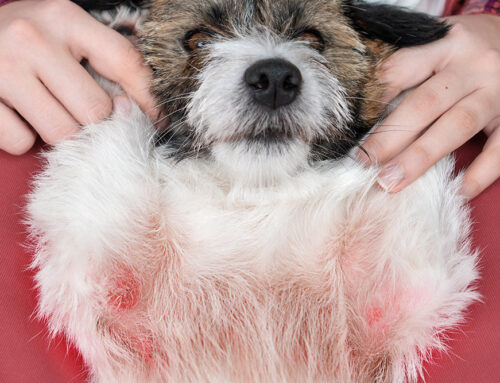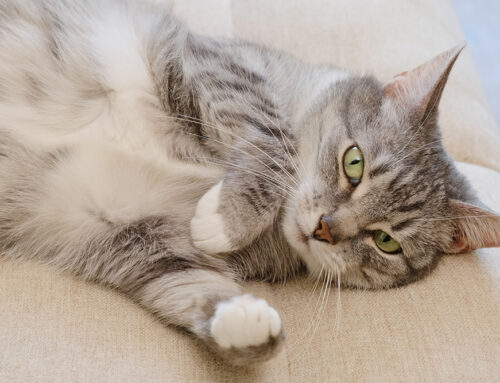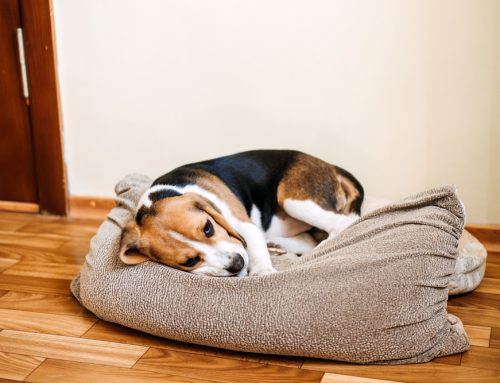Americans love their pets, but not always in a healthy way. Pet obesity in the United States is reaching epidemic proportions. In a 2018 study by the Association for Pet Obesity Prevention, nearly 60 percent of cats and 56 percent of dogs were classified as overweight or obese. Be proactive about your pet’s weight. Let the team at Willow Wood Animal Hospital show you how to assess your pet, and help them live a longer, healthier life.
The price of pet obesity
Being obese is much more than being “fluffy.” Adipose tissue (i.e., fat) is pro-inflammatory, and an excess amount makes pets more susceptible to:
- Chronic inflammation
- Cancer
- Osteoarthritis
- Diabetes
- Kidney disease
- High blood pressure
- Respiratory and heart disease
On average, overweight pets live two years less than animals with a healthy body weight. Are a “few extra pounds” worth losing two years of quality time with your pet? Here are five ways to help keep your pet at their ideal weight.
#1: Learn to assess your pet’s weight
With the diversity of dog and cat breeds, and mixed breeds, a pet’s ideal weight is highly subjective, but the following guidelines will help you determine how your pet measures up.
- Look closely — Your pet should have an hourglass shape when viewed from above, and a visible waist when viewed from the side.
- Be hands-on — Can you feel your pet’s ribs easily? Do your fingers drop into the space between each rib, or is a tissue layer—spoiler alert, that’s actually fat—creating a solid barrier? Try this for comparison:
- Hold out your hand flat, palm down, and move your fingers across your knuckles. That is how your pet’s ribs should feel.
- Close your fist and feel again—this is too thin.
- Turn your hand over—the area over your knuckles is a pet who is moderately overweight.
- Feel your palm directly down from your thumb—this is a severely overweight pet.
A body condition scoring (BCS) scale is a helpful visual aid that ranks dogs and cats from one to nine , with five being “ideal.” Drs. Whitman, Hess, and Connolly assess your pet’s BCS at every examination, and record their number in their chart.
#2: Pair up with the pet professionals
If your pet is in the overweight or obese category, a visit to Willow Wood Animal Hospital should be your first step. Do not attempt a diet or exercise program for your pet without discussing your plans with one of our veterinarians.
- Could they be sick? — Several medical conditions can contribute to weight gain in pets, and our veterinarian will rule those out first. These include:
- Thyroid disease
- Cushing’s disease
- Diabetes
- Fluid retention from liver or cardiovascular disease
- Can exercise be bad? —Exercise without veterinary guidance can be ineffective at best, and at worst may exacerbate pre-existing conditions, such as:
- Osteoarthritis
- Cruciate ligament rupture
- Hip or elbow dysplasia
- Luxating patellas
If your pet is healthy, our veterinarians can develop a safe weight-loss plan for your pet, including tailored food recommendations, and low-impact exercises that will prevent injury, and protect joints.
#3: Measure your pet’s food accurately
Use a measuring cup when portioning your pet’s food. Overfeeding is easy when amounts are guesstimated, or an unmarked scoop is used. Understand that a cup of food means using a measuring cup (i.e., the utensil used for baking and measuring dry goods), and not a soda cup, feed scoop, or margarine container. The measured amount should be leveled off, not rounded, to ensure no extra calories are being fed.
#4: Feed your pet regular meals
Put an end to free-feeding. Pets who are fed at regular times are more satisfied, as their blood glucose remains more steady throughout the day. Bodies are “primed” to eat on a schedule, which aids in effective metabolism. Pets should be fed their total daily portion divided into at least two small meals per day.
To encourage cats and dogs to eat on a schedule, offer them food for 10 to 15 minutes, and then remove the bowl. Pets will transition when they realize grazing is no longer an option.
#5: Exercise your pet with purpose

Calories consumed must equal calories burned to maintain a healthy body weight. Therefore, physical exercise is vital for achieving or maintaining a proper weight. For pets approved for physical exercise, it’s time to get moving.
- A stroll is not a walk — Walking for aerobic benefit is fast-paced. Frequent stopping and sniffing does not provide your pet with any cardiovascular benefit. Shorten their leash, step out with purpose and focus, set the pace, and encourage your dog to keep up. Begin with short, brisk walks, and gradually increase the pace and distance as your dog gets stronger. Your dog can stop and sniff on the way back home.
- Food time can be “think” time — Move your pet’s food bowl so it’s further to reach, and try food puzzle toys that roll or rock and require physical and mental exercise to access.
- Felines can have fun, too — Encourage your cat to move with perches, feather wands, reach boxes, and food puzzles, and hunting toys, like these hideable mice that can be stuffed into your cat’s food.
Do you have additional questions about weight management? Do you need to schedule an appointment to correctly assess your pet’s weight and BCS, and determine whether they need to diet? Contact our team at Willow Wood Animal Hospital for help, plus we can provide a customized diet and exercise plan for your pet, if necessary.







Leave A Comment